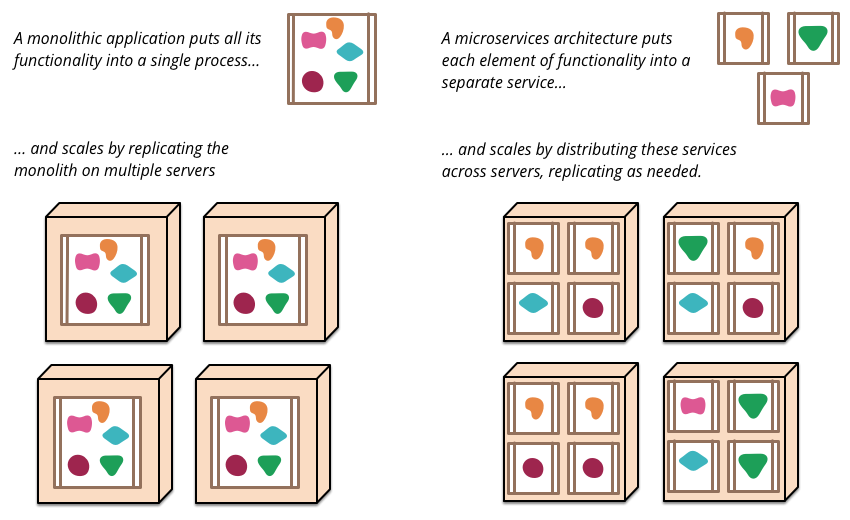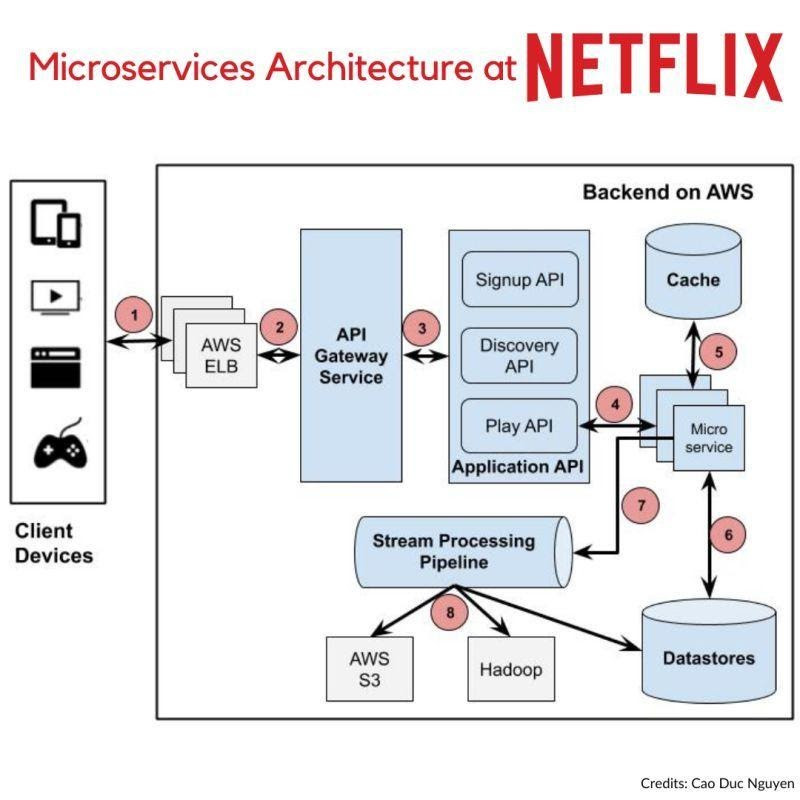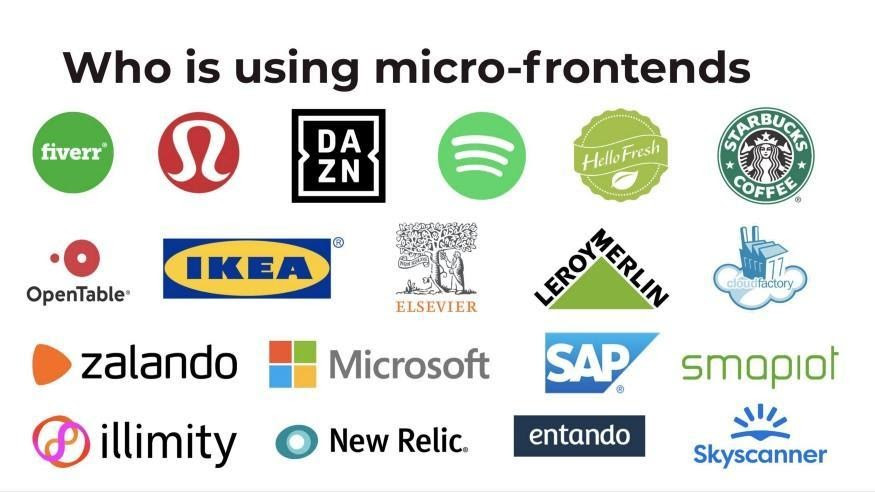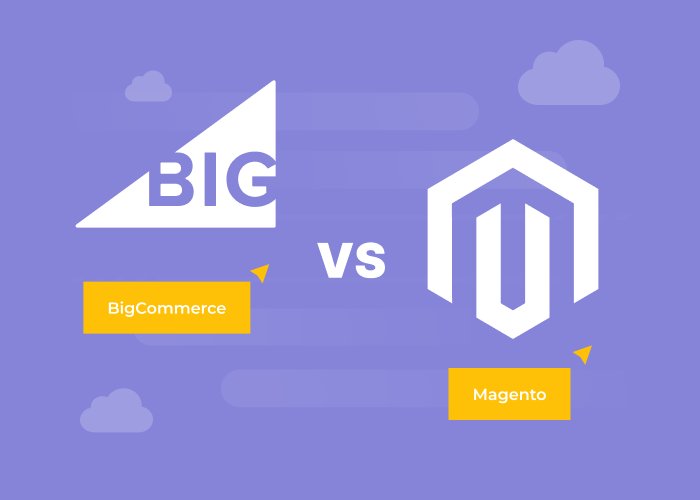Content
Microservices: Is Your E-commerce Company Ready to Follow This Architectural Style?

Time to read: 17 minutes
Lately, there is an increasing trend in e-commerce, adopting the microservices approach to software architecture, which has overshadowed a traditional approach: monolithic. Indeed, microservices, it seems, made a breakthrough in the IT-sphere, transformed modern entrepreneurs’ vision of their software development, and opened broad prospects for digital businesses.
According to the survey by IBM Market Development & Insights, 56% of respondents say that they are very likely to adopt a microservices approach in the next two years. And 78% of those who have already implemented microservices will continue to invest in it.
The interest is evident, so Dinarys experts have no choice but to delve deeply into this issue. By giving a clear understanding of the idea of microservices, we want to enable your business to make a positive 180-degree change.
In this article, you will find a comprehensive, yet succinct, overview of microservices, prerequisites for its swift progression, and a monolithic vs. microservices comparison in terms of cost-efficiency and sustainability.
Lets talk about itHave a project in mind?
What Are Microservices?
Microservices (or microservices architecture) is a methodology that builds up broken down systems, creating smaller loosely coupled, independently deployable, and autonomously scalable services. Living its own life, each microservice still maintains the integrity of the whole application and contributes to the fulfillment of overall business objectives via API-based communication.
It is important to stress that most business benefits, credit with microservices, like the possibility to isolate testing of individual application components, increased velocity of application delivery, etc., arise from its API-first nature.
Moreover, microservices are not only considered a software structure. It is an organization’s culture, which makes teams more cross-functional, giving them the opportunity to assess how they affect the products they work on.
What Is the Alternative to Microservices?
To understand why microservices architecture adoption takes shape, let us switch back to its methodology counterpart: monolithic architecture.
Referring to the non-technical definition, a monolith is an object that consists of a single massive material. In our case, monolithic architecture is a software architecture model that fosters the development of an all-in-one-piece application, where all components are managed in one indivisible unit, being distributed as a single file.

Source: martinfowler.com
Until quite recently, monolithic architecture has been seen as the ultimate approach, but things have moved on. Even though the monolith approach can address essential business needs, market demands are changing rapidly, creating opportunities to implement more comprehensive methods/approaches.
Why Do Microservices Manifest?
The emergence of mobile-first, the shift to omnichannel retail, the availability of technologies aligned with microservices development, and many other reasons triggered building microservices. Currently, its adoption is so rapid that 86% of developers worldwide predict it will become the default software architecture within the next five years.
Examples of Successful Companies that Switched to Microservices
Here are some examples of the leading tech companies that use microservices:
- Netflix;
- Amazon;
- Uber;
- eBay;
- Sound Cloud;
- Coca Cola;
- Zalando;
- Etsy;
- Spotify;
- Twitter, etc.
As Smartbear said once, “You can’t talk about microservices without mentioning Netflix.” So, we will not break this tradition, as Netflix, in fact, is considered one of the pioneers in microservices implementation. Having decided to go micro in 2009 because of scaling issues, the company managed to get a reputation as a first-class service in its niche market, and it remains so to this day, serving up to 200 million subscribers worldwide.

Source: smartstudios.io
Micro Frontend: How Does It Relate to Microservices?
When you look through platform build methodologies, you may notice another development trend, which resonates with microservices: micro frontend architecture. While different organizations were mostly focused on addressing monolithic backend limitations, monolithic frontend codebase brought its own challenges too.
Micro frontend is a part of the microservices development concept that revolves around frontend web development. It is an approach to software architecture in which frontend applications are segregated into separate semi-independent micro-apps. Similar to microservices, they can be developed, tested, and deployed individually, creating a homogenous interface.
Key Benefits of Micro Frontend
The concept of micro frontend has been named after microservices for a reason. The benefits of these two approaches are quite similar. Micro frontend has the following perks for frontend teams and e-commerce businesses.
Sustained upgrades
Micro frontend facilitates case-by-case decisions regarding particular product components, allowing for steady and point architecture upgrades whenever an element requires it. Additionally, micro frontend streamlines testing of new technologies and interaction modes—it is now possible to fulfill it in a more isolated way.
Cleaner codebase
Unlike monolithic frontend, micro frontend’s components have much smaller and, thus, cleaner source code, making it easier to work with a project, make changes, and avert any possible coupling of components.
Seamless scalability and deployment
Each micro frontend has its own continuous delivery pipeline. Such autonomous nature allows for ease of software development, testing, and deployment without interrupting the status of other pipelines and codebases.
For further clarity, you might be interested in reading “What Is DevOps Pipeline?”
Operational independence
Not only do codebases of micro frontend architecture operate autonomously, but so do development teams. Every team member has full control over the components they work with. It encourages responsibility for end results and speeds up the overall development workflow.

Source: bitsrc.io
Nowadays, micro frontend architecture has been used widely in large companies with distributed teams and a high rate of requests. It is a suitable solution for complex projects, as codebases get more extensive over the years and require more scalable architecture.
The Benefits of Microservices Architecture over Monolithic Architecture
Let us further demonstrate the benefits of microservices by looking at their common characteristics and drawing a parallel between this architectural style and its alternative: monolithic architecture.
Advantages of Microservices
Generally, microservices allow e-commerce companies to design multifunctional and highly scalable e-commerce applications, simplify their testing and frequent deployment, and expedite time to market.
However, potential microservices benefits do not come by default—they depend on accurate microservices implementation in accordance with specific business capabilities and priorities. Microservices methodology in conjunction with a knowledgeable e-commerce development team will present the following business opportunities.
Independent deployment
Smaller codebase and scope enable regular improvements and faster software updates, which, in turn, will let you reap maximum benefits from continuous deployment.
Autonomous scaling
Dealing with software components individually, you are free to remove, add, or scale a separate microservice as required by the business, without the need to scale an entire app. You will appreciate the total cost of ownership, as when you scale only those services you need, you significantly lower the cost of cloud server resources.
Technology diversity
You are flexible in choosing languages, development frameworks, or data stores for each microservice. Thus, it is possible to experiment with new technologies without the need to commit to a certain technology stack and conduct upgrades without tough library versioning issues, again, due to a maintainable and compact codebase.
Fault-tolerant design
As a rule, the failure of a single microservice does not cause the whole system to crash. Also, even though dependencies still exist between microservices, the way microservices architecture was built allows you to prevent a failure from cascading throughout the app. This is particularly critical for complex systems where failure is not uncommon.
Enhanced data security
Obviously, the modular nature of microservices with a large attack surface may lead to its own security challenges. Fortunately, secure APIs come to assist. They guarantee the confidentiality of data they process, enable complete control over sensitive resources, and filter its requests.
Additionally, being isolated, a microservice is not able to access data another microservice possesses—also working to deter cybercriminals. Once a single microservice is compromised, hackers still must make a fresh start to attack other system components.
Thanks to this particular benefit, it is much easier to conform to HIPAA, GDPR, and other data security regulations.
Effective cross-team coordination
Any microservices development team must be focused on the lifecycle of a particular service up until it reaches its end consumer. In terms of corporate culture, such a communication structure positively affects product development. Being fully responsible for the work outcome nourishes a culture of ownership, defining team boundaries and motivating teams to be more productive and inventive.
Monolithic Architecture Drawbacks
For a more comprehensive comparison of the monolith to microservices, we will go over the above points. See the following breakdown.
Difficulties with continuous deployment
Representing a one-piece code where every single element is closely interrelated, monolithic architecture requires redeployment of the entire application at once. Otherwise, there is a bigger probability that non-updated components will not function properly afterward. This issue lowers deployment frequency, especially causing problems for UI developers since their work includes frequent deployment.
Poor scalability
While building microservices is highly flexible in terms of scaling, monolithic applications allow scaling in only one dimension, duplicating app copies. Just like with deployment, separate function points cannot be scaled independently, as each of them may have different resource requirements.
Technology lock-in
Monolithic architecture also presents obstacles for new technology adoption, and it increases the time and cost needed to change frameworks or languages. Sometimes it even refers to the technology version, which makes you figuratively tied to the technology stack you picked from the start, with no option to reverse it.
Also, difficulties in technology shift can sabotage upgrades. If you upgrade a certain part of the software, it may negatively affect another part.
No failure resistance
In contrast to microservices, runtime failures are much more common in monolithic systems. Since each element runs in the same environment and all instances of the system are identical, the failure of a single component may negatively influence the stability of overall performance.
Security issues
The monolithic pattern has its own shortcomings when it comes to the security of a big multi-faceted system. The monolithic nature raises the risk of malware dissemination throughout the app. In order to prevent its further spread, it is necessary to lock down the component that was breached, resulting in the suspension of all performance of the app. According to Gartner, the average cost of an IT downtime minute is $5,600.
On top of that, a solid multifunctional environment makes it harder to identify which exact component requires to be patched.
Long onboarding for newcomers
The specifics of monolithic architecture may also hamper development processes. The monolithic software can be difficult to understand, and sometimes it may take a long time for newcomers to get acquainted and comfortable with a codebase to make a reasonable contribution.
Furthermore, blurry module boundaries make it harder to keep a development team disciplined, while also assign clear responsibilities. Of course, the bigger a project is, the more complicated this task becomes.
Monolith Is Not Over Yet. What Keeps It Afloat?
Although microservices development is gradually beginning to replace monolithic architecture, we cannot give up on it so fast. The monolithic movement has a bevy of strengths to offer e-commerce businesses, which allows it to remain in demand.
There are many examples of companies that stayed with monolithic architecture and flourished. Amazingly, the web version of Facebook has a monolithic PHP backend. Such social media giants as Instagram and Reddit also use their original monolithic codebase, carrying out updates daily and find everything working well.
The main advantage of monolithic architecture is infrastructure simplicity. This speeds up application deployment, scaling, and end-to-end testing. Monoliths are certainly a good fit when it concerns small applications with a small number of users.
However, monolith-first can be also widely spread across enterprises. Even the most skilled developers will not define precise boundaries between microservices from the start. For this reason, some practitioners claim that going directly to microservices can be risky.
Monoliths give a good opportunity to evaluate project complexity and decide on the right component boundaries in the process. In our practice, we quite often observe the tendency to start with monolithic applications and, later on, split them into standalone microservices.
When You Should Shift the Focus from Monolithic Systems to Microservices
As e-commerce technologies evolve and some companies are considering composable commerce migration, paying their attention to BigCommerce headless. Generally, microservices are a key to a company’s long-term success and high level of competitiveness.
However, as experienced e-commerce developers, we contend that everything is relative. Every project has its own ins and outs that must be examined in depth before reaching the final verdict: going to microservices or not.
Switching to microservices development involves the total transformation of the way of thinking, business processes, and tooling.
To make sure your business can manage microservices and reduce the risk of infrastructure overload and unnecessary costs, let us provide an overview for the main questions to ask before adopting this architectural pattern.
What is your corporate culture?
According to sociologist Ron Westrum, there are three organizational models in technology organizations: pathological, bureaucratic, and generative. To measure your organizational culture, ask one simple question: “When someone brings bad news to your company, how does your company react?”
If your messengers are “shot”, then your model is pathological. Such companies are usually fear-motivated and tend to distort information to make a better impression. If messengers are neglected, then you have a bureaucratic culture. Such organizations are mostly guided by the rules and do not welcome innovation. And finally, if messengers are trained, then your organization is generative and moves towards good performance.
Therefore, organizations with a generative model are the most suitable for building microservices.
Has your software project been integrated with DevOps processes before?
Mature development and operation methodologies remain indispensable for companies that consider microservices. You should ensure you have all the right tools, such as CI/CD pipeline and Kubernetes, to prepare for change.
Apart from all the necessary tools, to derive maximum benefit from microservices it is also important to have a professional DevOps team in place. They will advance the process towards better product quality, error elimination, and an increased level of business value.
Read more for further clarification: “How to Hire a DevOps Engineer in 2021”
Are your monitoring tools robust enough to serve microservices?
A microservices health check is a vital part of overall software performance. You should be well-equipped with effective monitoring tools to gain insight into the operation of each separate component, identifying what causes a failure, and preparing a timely recovery for this microservice.
What do you want to achieve with microservices architecture?
Planning to follow the microservices concept, you should analyze your business data, know what changing needs of your customers you want to address, and identify what you will need to level up. Cooperating closely with a reliable team of e-commerce specialists, you can more quickly decide the direction and pace of your business development.
Microservices architecture might be good for you if your organization pursues the following goals:
- Faster time to market;
- Improved ROI with reduced TCO;
- Increased application resilience;
- Enhanced scalability;
- Easier debugging and maintenance;
- Smooth outsourcing, etc.

The Nakagin Capsule Tower in Tokyo adequately sums up the idea of microservices. The building represents two interconnected concrete towers, comprised of 140 prefabricated lightweight capsules. Capsules are individually attached to towers by high-tension bolts and can be easily removed without affecting the others.
Final Say
The microservices movement dates back to 2005, when the term “micro web service” was first used by Dr. Peter Rogers at a conference on cloud computing. Since then, this software architecture style has gathered speed.
Microservices are a brand new approach to software architecture development, which has been already adopted by numerous leading e-commerce companies. This architectural style is expected to become a default one very soon.
As to the current situation on the market, monolithic architecture still prevails in specific cases. The feasibility of microservices migration heavily depends on a given business’s demands, as each e-commerce company has a different vision of its value realization, calling for unique solutions. At Dinarys, we focus intently on business individuality and consider the need for migration to microservices within the particular business’s potential.
Contact us, and we will plan and modernize your project architecture with the use of microservices best practices, if necessary. Architecture planning relates to the discovery phase of our workflow, where we thoroughly investigate your business, create a product prototype, base documentation, and check your business’s readiness for microservices.
You should definitely look into this opportunity, as microservices are an excellent foundation for serious work with heavy loads.
Let professionals meet your challenge
Our certified specialists will find the most optimal solution for your business.



